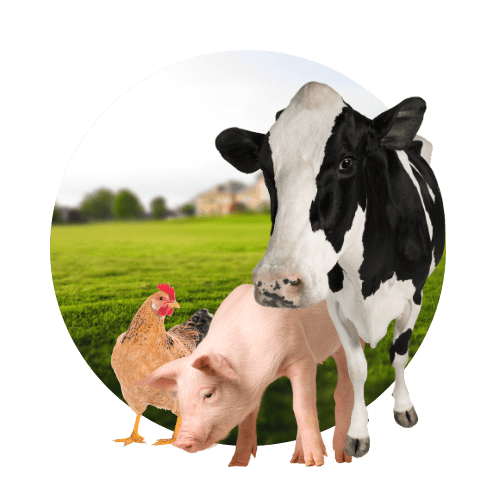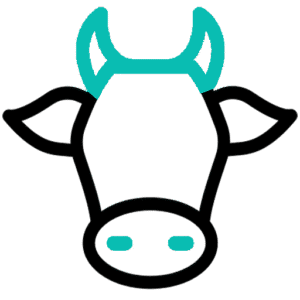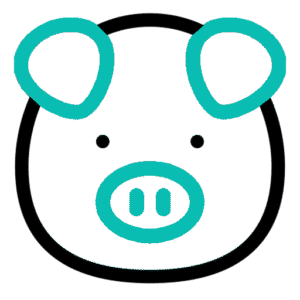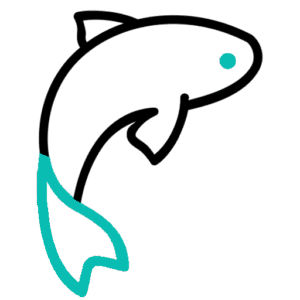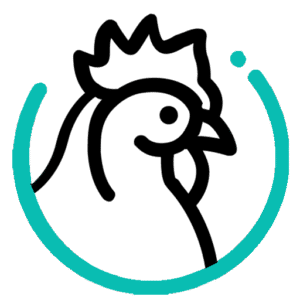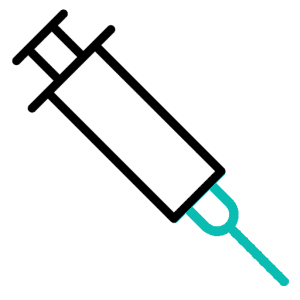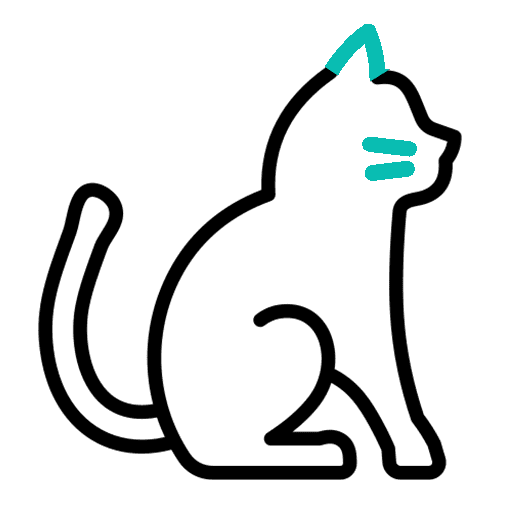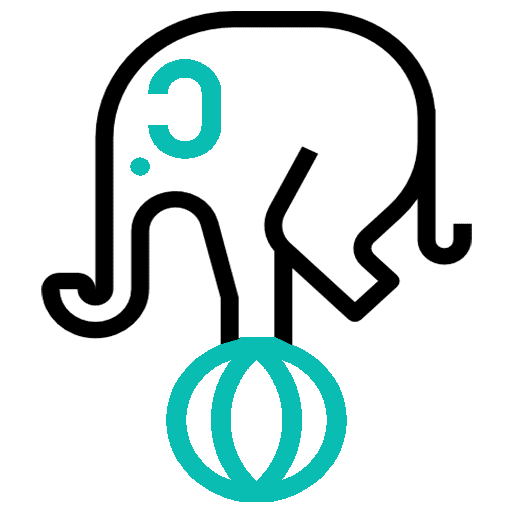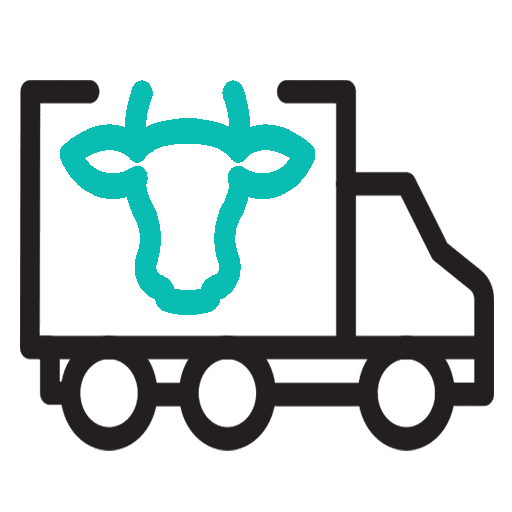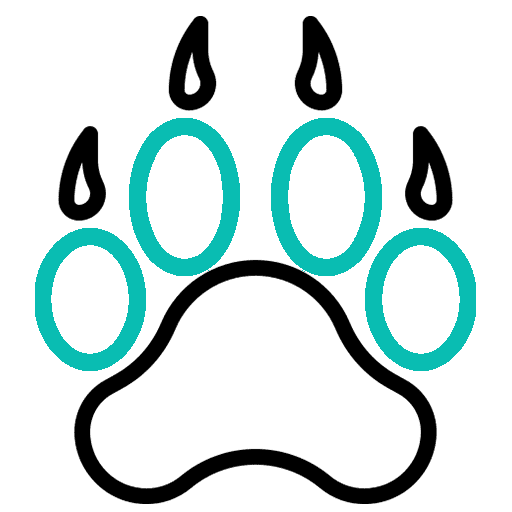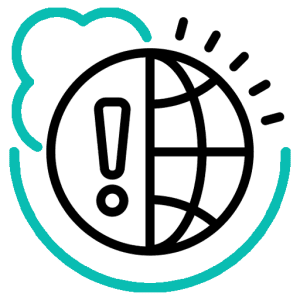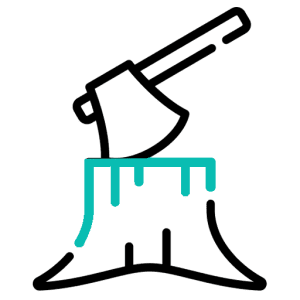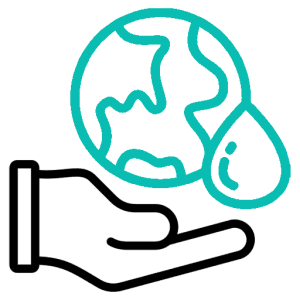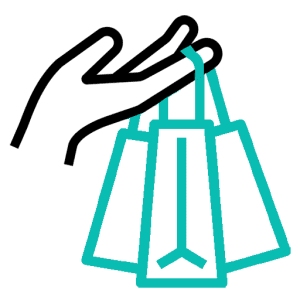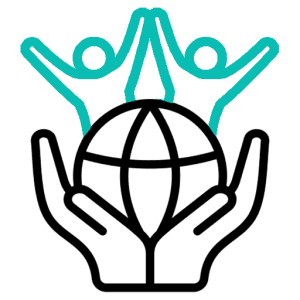Wildlife poaching stands as a dark stain on humanity’s relationship with the natural world. It represents the ultimate betrayal against the magnificent creatures that share our planet. As populations of various species dwindle due to the insatiable greed of poachers, the delicate balance of ecosystems is disrupted, and the future of biodiversity is jeopardized. This essay delves into the depths of wildlife poaching, exploring its causes, consequences, and the urgent need for collective action to combat this egregious crime against nature.
The Tragedy of Poaching
Poaching, the illegal hunting, killing, or capturing of wild animals, has been a scourge on wildlife populations for centuries. Whether driven by the demand for exotic trophies, traditional medicines, or lucrative animal products, poachers show a callous disregard for the intrinsic value of life and the ecological roles these creatures fulfill. Elephants slaughtered for their ivory tusks, rhinos hunted for their horns, and tigers targeted for their bones are just a few examples of the devastation wrought by poaching.
Here are just a few animals whose populations have been impacted by poaching.
Antelopes:
Antelopes, with their elegant forms and graceful movements, are an integral part of the African savanna and various ecosystems around the world. Yet, despite their beauty and ecological significance, these majestic creatures face grave threats from illegal hunting for both bushmeat and their coveted horns.
The hunting of antelopes for bushmeat is a pervasive issue across many regions where these animals roam. Even in areas where hunting is banned or regulated, the demand for antelope meat persists, driven by factors such as poverty, food insecurity, and cultural traditions. For many communities, particularly those living in rural areas, antelope meat serves as a vital source of protein and sustenance. However, unsustainable hunting practices and overexploitation have led to a decline in antelope populations, disrupting ecological balances and threatening the survival of these species.
Additionally, antelopes are targeted for their horns, which are highly valued in traditional medicine, as decorative ornaments, and even as purported aphrodisiacs. Despite the implementation of trade bans and conservation efforts, the illegal trade in antelope horns continues to thrive due to the persistent demand for these products. Poachers often resort to brutal methods to obtain antelope horns, including illegal hunting, trafficking, and smuggling, further exacerbating the decline of antelope populations.

Buffalo:
The plight of African buffalo, iconic symbols of the continent’s vast savannas and grasslands, reflects a broader crisis facing wildlife conservation efforts worldwide. Despite their formidable stature and seemingly robust populations, African buffalo are increasingly falling victim to the insidious threat of poaching, primarily driven by the demand for bushmeat. This illegal practice not only decimates buffalo populations but also undermines the integrity of protected areas, including national parks, where these majestic animals should find refuge.
The African buffalo, with its imposing horns and distinctive silhouette, holds a special place in the ecosystem as both a keystone species and a cultural icon. However, the relentless pursuit of buffalo for bushmeat has led to a significant decline in their numbers in recent years. Poaching occurs indiscriminately, targeting buffalo herds both inside and outside protected areas, posing a grave threat to their survival.
One of the most alarming aspects of buffalo poaching is its occurrence within national parks and other conservation areas. These supposed havens for wildlife are meant to provide sanctuary for species like the African buffalo, shielding them from the pressures of human exploitation. However, rampant poaching, fueled by poverty, lack of alternative livelihoods, and weak law enforcement, has penetrated even the most heavily guarded reserves, leaving buffalo populations vulnerable to exploitation.

Rhinos:
The alarming rise in rhino poaching represents a tragic assault on one of the planet’s most iconic and endangered species. With an estimated 7,100 rhinos poached in Africa over a recent 10-year period, these magnificent creatures face an existential threat driven by insatiable demand for their horns in illegal markets. What makes this crisis particularly horrifying is the brutal methods employed by poachers, who resort to aerial attacks using helicopters and sophisticated weaponry to target rhinos with chilling efficiency.
Rhinos, with their prehistoric appearance and formidable presence, are among the most recognizable symbols of Africa’s rich biodiversity. However, their populations have been decimated by poaching fueled by the erroneous belief in the medicinal properties and status symbol value of their horns. This demand, primarily from Asian markets, has driven rhinos to the brink of extinction, with some species teetering on the edge of survival.
The methods employed by rhino poachers are both merciless and technologically advanced. Operating from helicopters, poachers use high-powered rifles and tranquilizer darts to incapacitate their targets from the sky. Once the rhino is subdued, poachers swiftly descend to the ground and use chainsaws to ruthlessly remove its horns—a process that takes a mere 10 minutes. Even if the rhino survives the initial attack, the brutal removal of its horn often results in fatal injuries, leaving the animal to suffer a slow and agonizing death.

Elephants:
The plight of elephants, majestic giants of the savannas and forests, epitomizes the devastating impact of the illegal ivory trade on wildlife populations. For centuries, elephants have been ruthlessly hunted for their tusks, coveted for their ivory, which is used in various cultural and commercial products. Despite widespread recognition of the destructive consequences of the ivory trade and the implementation of bans in many countries, poaching of elephants continues unabated, driven by demand from regions where ivory remains legal.
The ivory trade, fueled by its perceived cultural and economic value, poses a grave threat to elephant populations worldwide. Despite international efforts to curb the trade, including the implementation of a global ban on ivory sales in 1989 by the Convention on International Trade in Endangered Species of Wild Fauna and Flora (CITES), loopholes in legislation and lax enforcement have allowed the illicit trade to persist. Countries such as Vietnam, Myanmar, Laos, and Thailand continue to permit the legal sale of ivory, providing avenues for traffickers to launder illicit ivory and perpetuate the demand for elephant tusks.
The consequences of the ivory trade are devastating. African elephants, in particular, have borne the brunt of poaching pressure, with populations declining precipitously in recent decades. Despite a peak in poaching in the early 2000s and a subsequent slow decline, approximately 20,000 elephants are still killed in Africa each year, pushing these iconic animals closer to the brink of extinction. The loss of elephants not only represents a tragic depletion of biodiversity but also undermines the ecological integrity of the habitats they inhabit.

African grey parrots:
The African grey parrot, renowned for its intelligence, charisma, and striking plumage, has captured the hearts of bird enthusiasts around the world. However, behind the allure of these magnificent birds lies a tragic tale of exploitation and endangerment driven by the insatiable demand for exotic pets. Poaching for the illegal pet trade has exacted a heavy toll on African grey parrot populations, pushing them to the brink of extinction.
Since 1975, over 1.3 million African grey parrots have been captured from the wild and traded internationally to satisfy the demand for these coveted avian companions. However, the journey from forest to cage is fraught with peril for these sensitive creatures. Shockingly, research suggests that between 30% to 66% of grey parrots captured from the wild perish in the process, succumbing to the stress of capture, confinement, and transportation. Consequently, the true extent of the impact of this illegal trade on African grey parrot populations is likely much higher than official estimates.
The consequences of the illegal pet trade extend far beyond the individual birds caught in its grasp. As highly social and intelligent creatures, African grey parrots play vital roles in their ecosystems as seed dispersers and contributors to biodiversity. Their decline can have cascading effects on forest ecosystems, disrupting ecological processes and threatening the survival of other species.

Apes:
The hunting of apes for bushmeat represents a tragic convergence of environmental degradation, cultural shifts, and global demand for exotic delicacies. Once a source of sustenance for local communities, bushmeat hunting has evolved into a lucrative commercial enterprise, driven by the demand from consumers, particularly in Asia, who view ape meat as a luxury product. This insatiable appetite for bushmeat has led to a surge in hunting pressure on ape populations across Africa and Asia, threatening the survival of these iconic and endangered species.
Apes, including bonobos, orangutans, chimpanzees, gorillas, and gibbons, are among our closest relatives in the animal kingdom, sharing a remarkable degree of genetic similarity with humans. Their complex social structures, cognitive abilities, and emotional intelligence make them highly vulnerable to the impacts of hunting and habitat loss. Yet, despite their ecological significance and conservation status, apes continue to be targeted by hunters for their meat, driven by cultural traditions, poverty, and the allure of financial gain.
The commercial bushmeat trade has transformed hunting from a subsistence activity into a large-scale industry, with sophisticated networks of traders, suppliers, and consumers spanning continents. More than five million tonnes of bushmeat are exported from the Congo Basin alone each year, highlighting the scale of the trade and its impact on wildlife populations. Apes, with their large body sizes and social behavior, are particularly coveted targets for hunters, leading to rapid declines in their numbers and fragmentation of their habitats.

Glass frogs:
The enchanting beauty of glass frogs, with their translucent skin revealing their internal organs, has made them sought-after treasures in the exotic pet trade. However, this growing demand for these delicate amphibians has led to significant pressures on wild populations, with many species facing the threat of extinction due to overexploitation and illegal trade.
Glass frogs are native to the lush rainforests of Central and South America, where they play vital roles as indicators of ecosystem health and contributors to biodiversity. However, their striking appearance and unique biology have made them prime targets for collectors and enthusiasts in the pet trade. Despite being listed as endangered or vulnerable species, glass frogs continue to be taken from the wild for sale in domestic and international markets.
The illegal trade in glass frogs poses serious threats to their survival, with evidence of smuggling and trafficking operations discovered in shipments moving from Central America to Europe. According to trade data and online advertisements, more than nine species of glass frogs are currently traded internationally, with demand driven by collectors and hobbyists seeking these exotic amphibians.
One concerning trend is the significant increase in imports of glass frogs to the United States, with a staggering 44,000% rise observed from 2016 to 2021. This exponential growth in trade poses a significant risk to wild populations, as increased demand puts further pressure on already vulnerable species and their habitats.
Efforts to address the illegal trade in glass frogs require a coordinated and multi-faceted approach that involves collaboration between governments, conservation organizations, law enforcement agencies, and the pet trade industry. Enhanced law enforcement, intelligence gathering, and anti-trafficking measures are essential for disrupting smuggling networks and holding perpetrators accountable.

Lions:
The illegal hunting of lions for their body parts represents a grave threat to one of Africa’s most iconic and revered species. Lions, with their majestic mane and powerful presence, have long captured the imagination of people around the world. However, behind their regal facade lies a tragic reality of persecution and exploitation driven by the demand for their bones, teeth, and claws in traditional medicine and the illegal wildlife trade.
Lions are targeted by poachers for their body parts, which are highly valued in certain cultural practices and markets. Bones, teeth, and claws are sought after for their perceived medicinal properties and symbolic significance, driving the illicit trade in lion parts. Despite legal protections and conservation efforts, poachers continue to target lions, often using cruel and indiscriminate methods such as snares to trap and kill these magnificent creatures.
The use of snares in lion poaching is particularly inhumane, causing immense suffering and often resulting in slow and agonizing deaths. Snares are simple yet effective traps, consisting of wire nooses that tighten around the animal’s body when triggered. Lions caught in snares may suffer severe injuries, including lacerations, fractures, and strangulation, before eventually succumbing to their wounds or starvation. The indiscriminate nature of snares also poses risks to other wildlife species, leading to unintended casualties and ecological disruption.
The consequences of lion poaching extend beyond the immediate loss of individual animals to encompass broader ecological and social impacts. Lions play crucial roles as apex predators in their ecosystems, regulating prey populations and maintaining the balance of natural systems. Their decline can have cascading effects on biodiversity, leading to imbalances in predator-prey dynamics and ecosystem degradation.

Peccaries:
The plight of peccaries, also known as javelinas, serves as a poignant reminder of the challenges facing wildlife conservation efforts in both North and South America. These New World pigs, comprising species such as the Chacoan peccary and the collared peccary, face relentless pressure from hunting and poaching despite legal protections and conservation measures in place.
The endangered Chacoan peccary, native to the Chaco region of South America, is hunted throughout its range for its hides and meat. Despite being listed on Appendix I of the Convention on International Trade in Endangered Species of Wild Fauna and Flora (CITES), which strictly prohibits international trade in the species, and receiving trade protection in countries like Argentina, hunting of the Chacoan peccary persists. Moreover, in Paraguay, where hunting of wildlife is strictly prohibited, enforcement of these regulations remains inadequate, allowing poaching to continue unabated.
The situation is not much better for the collared peccary, another species of peccary found throughout North and South America. While currently listed as least concern by the International Union for Conservation of Nature (IUCN), poaching of collared peccaries is a common occurrence, particularly in areas where enforcement of protections is lacking. Despite their relatively stable populations, ongoing poaching could pose a significant threat to the long-term survival of collared peccaries if left unchecked.
The over-hunting of peccaries is driven by various factors, including demand for their hides, meat, and other body parts, as well as cultural traditions and economic incentives. The lack of effective enforcement of wildlife protection laws in many areas exacerbates the problem, allowing poachers to operate with impunity and exploit vulnerable species for profit.

Pangolins:
The plight of pangolins, often referred to as the world’s most trafficked mammals, highlights the urgent need for global action to protect these unique and imperiled species. Despite international regulations and recent efforts to curb the trade in pangolins, they continue to face relentless pressure from poaching and trafficking, driven by demand for their scales, meat, and skin.
The demand for pangolins stems primarily from traditional Chinese medicine, where pangolin scales are erroneously believed to possess medicinal properties. Despite a lack of scientific evidence to support these claims, the illegal trade in pangolin scales persists, driving poaching and trafficking across pangolin range countries in Africa and Asia. Additionally, pangolin meat is considered a delicacy in some cultures, further fueling demand for these elusive mammals.
In addition to traditional medicine and culinary preferences, pangolins also face threats from the fashion industry, particularly in the United States, where there is demand for pangolin skin for leather items such as boots, belts, and bags. Cowboy boots made from pangolin skin have contributed to the decline of these animals, exacerbating their already precarious conservation status.
Every species of pangolin is either vulnerable, endangered, or critically endangered, reflecting the severity of the threats they face. Habitat loss, poaching, and illegal trade continue to drive pangolin populations towards extinction, underscoring the urgent need for concerted conservation efforts to protect these unique and irreplaceable creatures.

Poison dart frogs:
The allure of poison dart frogs, with their vibrant colors and fascinating behaviors, has made them highly coveted species in the exotic pet trade. Unfortunately, this demand has fueled a relentless onslaught of poaching and wildlife trafficking, pushing many poison dart frog species to the brink of extinction. Despite efforts by local governments in South America to intervene, the illegal trade persists, driven by the allure of profits and the continued demand for these captivating amphibians.
Poison dart frogs, native to Central and South America, are prized for their striking colors and potent toxins, which serve as a defense mechanism against predators in the wild. However, their beauty has also made them prime targets for poachers seeking to capitalize on their popularity in the exotic pet trade. Despite the availability of captive-bred specimens, which can serve as sustainable alternatives to wild-caught individuals, the allure of wild-caught frogs remains strong for collectors and enthusiasts.
The illegal trade in poison dart frogs has had devastating consequences for wild populations, pushing some species to the brink of extinction. Poachers often employ cruel and destructive methods to capture these frogs, including habitat destruction, indiscriminate collection, and the use of toxic chemicals. Moreover, the stress of capture and transportation can have detrimental effects on the health and welfare of these delicate amphibians, further exacerbating their plight.
Despite efforts by local governments in South America to combat the illegal trade in poison dart frogs, enforcement of wildlife protection laws remains challenging due to limited resources, corruption, and inadequate infrastructure. Moreover, the global nature of the exotic pet trade makes it difficult to regulate and monitor the movement of these frogs across borders, allowing poachers and traffickers to exploit legal loopholes and evade detection.

Tigers:
The plight of tigers, iconic symbols of strength and majesty, is marred by the relentless threat of poaching and illegal trade. Poached for their skins, bones, and meat, tigers face grave peril as their populations dwindle due to relentless exploitation. Despite conservation efforts, the number of poached tigers remains alarmingly high, with many more likely lost to unreported incidents and the insidious methods used by poachers.
The illegal trade in tiger parts drives poaching across their range, from the forests of India and Southeast Asia to the remote habitats of Russia and China. Skins, bones, and other body parts are highly prized commodities in traditional medicine and luxury markets, fetching exorbitant prices on the black market. This demand fuels a lucrative trade network that spans borders, with tigers falling victim to poachers seeking to profit from their demise.
Despite efforts to combat poaching and trafficking, the scale of the problem remains staggering. In recent years, the number of known poached tigers has been distressingly high, with incidents reported in various countries across Asia. However, the true extent of tiger poaching is likely much greater, as many incidents go unreported or undetected, leaving countless tigers to vanish without a trace.
In Southeast Asia, tiger poaching is particularly rampant, with poachers employing ruthless methods such as snaring and poisoning to target these elusive predators. Snares, simple yet deadly traps made of wire or cable, are indiscriminate killers that ensnare not only tigers but also other wildlife species. Poisoning, often using toxic chemicals or poisoned bait, further compounds the threat to tiger populations, with devastating consequences for biodiversity and ecosystem health.
The consequences of tiger poaching extend beyond the loss of individual animals to encompass broader ecological and social impacts. Tigers play a crucial role as apex predators in their ecosystems, regulating prey populations and maintaining the balance of natural systems. Their decline can have cascading effects on biodiversity, leading to imbalances in food webs, loss of habitat, and degraded ecosystem services.
Efforts to address tiger poaching require a multi-faceted approach that involves collaboration between governments, conservation organizations, law enforcement agencies, and local communities. Enhanced law enforcement, intelligence gathering, and anti-poaching patrols are essential for disrupting poaching networks and dismantling trafficking routes.

Helmeted curassows:
The helmeted curassow, with its majestic appearance and distinctive casque resembling a helmet, is an emblematic bird species found in the lush forests of Venezuela and Colombia. Despite its cultural significance and ecological importance, the helmeted curassow faces numerous threats, including habitat loss, hunting, and illegal wildlife trade, which have pushed it to the brink of vulnerability.
One of the primary threats facing the helmeted curassow is hunting, driven by the demand for its meat, traditional jewelry made from feathers, and even hunting trophies such as skulls and eggs. The large casque on its forehead, which gives the bird its name, is particularly prized for its purported aphrodisiac properties, adding to the allure for hunters and collectors. Even within well-established protected areas, helmeted curassows are not safe from the threat of hunting, highlighting the urgent need for increased conservation efforts.
Despite efforts to regulate hunting and trade, including listing the species under CITES Appendix III in Colombia, which requires permits for export, enforcement of regulations remains challenging. Poaching and illegal trade continue to undermine conservation efforts, putting further pressure on helmeted curassow populations and exacerbating their vulnerability.
The consequences of hunting and illegal trade extend beyond the immediate loss of individual birds to encompass broader ecological and social impacts. Helmeted curassows play vital roles in their ecosystems as seed dispersers and contributors to biodiversity. Their decline can have cascading effects on forest dynamics, leading to imbalances in plant communities and reduced habitat quality for other species.

Leatherback turtles:
The plight of leatherback turtles, the largest of all sea turtles, underscores the urgent need for conservation efforts to protect these ancient and majestic marine creatures. While adult leatherback turtles face threats such as bycatch and habitat degradation, one of the most significant challenges to their survival comes from the illegal trade in their eggs, which are often stolen from nesting sites in coastal communities.
The theft of leatherback turtle eggs represents a grave threat to the species’ survival, as it disrupts the reproductive cycle and reduces the number of hatchlings entering the population. Leatherback turtles are known for their extensive migrations to nesting beaches, where females lay their eggs in sandy nests dug on the shore. However, these nesting sites are often targeted by poachers seeking to profit from the sale of turtle eggs, which are believed to possess aphrodisiac properties in some cultures.
Despite legal protections, including listing under Appendix I of the Convention on International Trade in Endangered Species of Wild Fauna and Flora (CITES), which prohibits commercial trade in leatherback turtles, enforcement of regulations remains challenging. The allure of leatherback turtle eggs as a delicacy or traditional medicine drives poachers to continue their illicit activities, further endangering the survival of this vulnerable species.
In addition to egg poaching, nesting female leatherback turtles are sometimes targeted for their meat, compounding the pressures facing the population. The loss of nesting females reduces the number of eggs laid and decreases genetic diversity, further threatening the long-term viability of leatherback turtle populations.
Efforts to address the threats facing leatherback turtles require a comprehensive approach that involves collaboration between governments, conservation organizations, local communities, and international stakeholders. Enhanced law enforcement, surveillance, and community engagement are essential for protecting nesting sites and deterring poachers from exploiting leatherback turtle populations.

Causes of Poaching
The roots of wildlife poaching are complex and multifaceted, often intertwining with issues such as poverty, corruption, and inadequate law enforcement. In many regions, impoverished communities turn to poaching as a means of survival, lured by the promise of quick profits in an unforgiving economic landscape. Moreover, the insatiable demand for wildlife products, particularly in lucrative markets such as Asia, perpetuates the cycle of poaching, driving hunters to extreme lengths to meet market demands.
Conservation Efforts and Challenges
Efforts to combat wildlife poaching encompass a range of strategies, including strengthened law enforcement, community engagement, and international cooperation. Conservation organizations work tirelessly to protect vulnerable species through initiatives such as anti-poaching patrols, habitat restoration, and public awareness campaigns. However, the fight against poaching is fraught with challenges, from the pervasive influence of organized crime syndicates to the limited resources available for conservation efforts. Moreover, the interconnected nature of global supply chains means that poaching hotspots in one region can have far-reaching implications for wildlife populations worldwide.
The Ethical Imperative
The ethical imperative to protect and preserve Earth’s biodiversity is undeniable. As stewards of the planet, we are entrusted with the responsibility to safeguard the rich tapestry of life that surrounds us, not only for the sake of future generations but for the intrinsic value of all living beings. This ethical imperative encompasses a profound recognition of our interconnectedness with the natural world and a commitment to respect, nurture, and coexist harmoniously with all forms of life.
At the heart of the ethical imperative is the recognition of the inherent worth and dignity of every species, regardless of their utility to humans. Each organism, from the smallest microbe to the largest mammal, plays a unique and irreplaceable role in the intricate web of life. Whether serving as pollinators, seed dispersers, or regulators of ecosystem dynamics, every species contributes to the resilience and stability of ecosystems, upon which all life depends.
Moreover, the ethical imperative extends beyond mere utilitarian considerations to encompass principles of compassion, empathy, and justice towards sentient beings. Animals, with their capacity to experience pleasure, pain, and suffering, deserve our moral consideration and protection from harm. This includes not only iconic and charismatic species but also the often-overlooked and underappreciated creatures that form the backbone of ecosystems.
The ethical imperative to protect biodiversity is also grounded in principles of intergenerational equity and environmental justice. As custodians of the planet, we have a moral obligation to ensure that future generations inherit a world rich in biodiversity, where they can thrive and flourish in harmony with nature. This requires making decisions today that prioritize the long-term health and well-being of ecosystems and all their inhabitants.
In light of the ecological challenges facing our planet, from climate change and habitat destruction to overexploitation and pollution, embracing the ethical imperative to protect biodiversity has never been more urgent. It calls upon us to reevaluate our relationship with the natural world, to recognize our responsibilities as caretakers of Earth, and to take decisive action to preserve the irreplaceable treasures of life that enrich our planet.
Ultimately, the ethical imperative to protect biodiversity is not just a moral obligation—it is a profound expression of our humanity, our interconnectedness with all life, and our commitment to building a more just, equitable, and sustainable world for present and future generations.
How We’re Tackling The Illegal Wildlife Trade
It’s inspiring to see concerted efforts being made to tackle the illegal wildlife trade head-on. By focusing on critical areas such as poaching, trafficking, consumer behavior, and governmental regulations, we can collectively work towards ending this devastating trade that threatens the survival of countless species.
First and foremost, supporting teams of rangers and local communities who bravely dedicate their lives to protecting wildlife from poachers is crucial. These frontline defenders often face significant risks and challenges, but their unwavering commitment is essential in safeguarding vulnerable species like elephants from harm.
Exposing and shutting down key hotspots and trafficking routes where illegal wildlife products are traded is another vital strategy. By disrupting these networks and holding perpetrators accountable, we can disrupt the flow of illegal goods and dismantle the criminal enterprises fueling the trade.
Addressing consumer behavior is equally important in reducing demand for illegal wildlife products. Promoting initiatives that raise awareness about the consequences of purchasing such products and offering sustainable alternatives can help shift attitudes and behaviors, ultimately decreasing the demand for wildlife products.
Additionally, putting pressure on governments to strengthen and enforce regulations related to wildlife protection is paramount. By advocating for stronger laws, stricter enforcement measures, and international cooperation, we can create an environment where the illegal wildlife trade becomes increasingly difficult and risky for traffickers and poachers.
By collectively addressing these critical areas, we can make significant strides towards ending the illegal wildlife trade once and for all. It’s heartening to see organizations and individuals come together to combat this global issue and protect the precious biodiversity of our planet for future generations.



